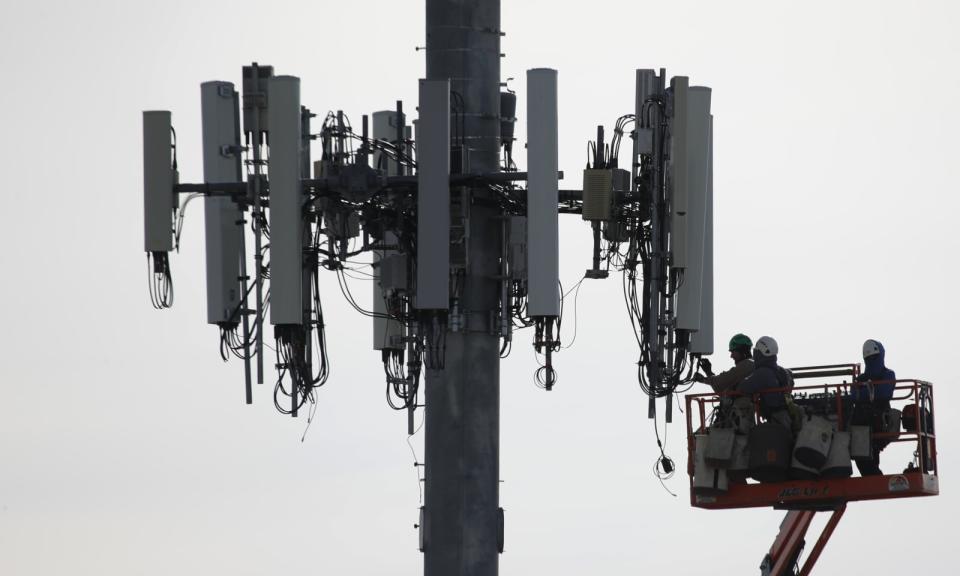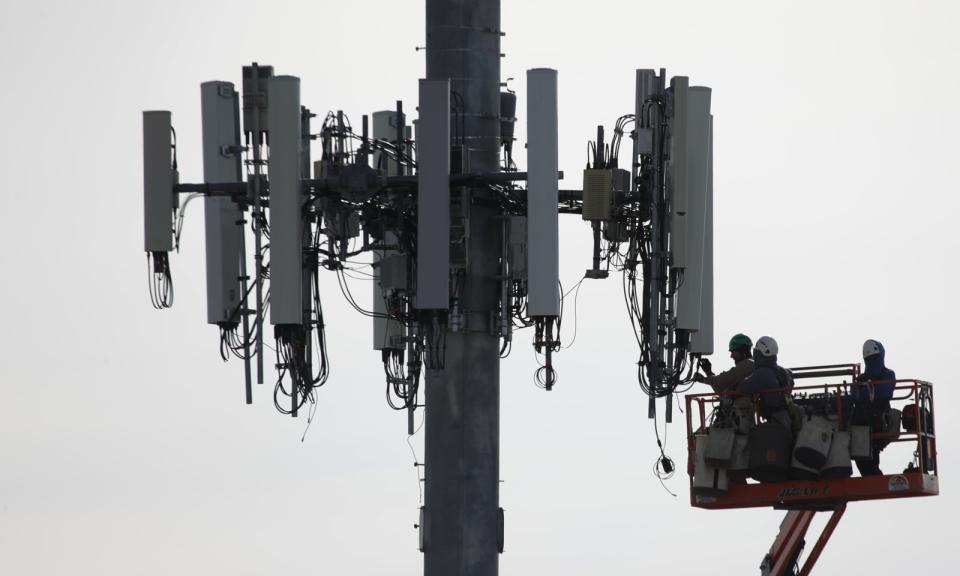No, 5G didn't start a pandemic
Do we really have to talk about this?
The advent of COVID-19 has sparked a whole new wave of paranoia among people who believe in the 5G conspiracy theory. Folks are suggesting newfangled wireless signals are somehow acting as a shepherd for the global pandemic. Or, worse, that 5G and the coronavirus are the tools of a shadowy new world order to turn us all into mindless zombies. Suffice to say, here's a patient explanation on why they're very, very wrong.
What 5G is
You'll have seen the hype about new 5G networks slowly rolling out across the globe, and the devices that can harness the 5G power. Over the next few years, the average speed of our wireless internet is going to skyrocket, with capacity getting broad enough to enable whole new industries. If you listen to the fearmongers, however, you may wind up thinking that 5G is an unsafe, bleeding-edge technology that hasn't been tested enough. It's easy to paint a picture of shadowy trucks delivering sinister, glowing 5G boxes across the US.
But 5G isn't a plot point in an '80s movie. It's just a catch-all term for a rather boring collection of wireless technology that's newer than what we had before. Hence the fifth generation of cellular technology as an upgrade on the fourth generation.
Not every entity in the telecoms space agrees on what 5G means because every company has upgraded its network differently. AT&T, for instance, was slammed for adding an 5GE logo on its existing handsets that could take advantage of faster LTE speeds -- but not connect to true 5G networks.
As we explained in a recent episode of Upscaled, 5G is really about redesigned antennas and new cell towers that can harness the broader spectrum. At the risk of oversimplifying this, 5G is just 4G/LTE, but with new algorithms making it faster and, theoretically, more reliable. But you didn't see the usual dim corners of the internet claiming that 4G made everyone contract SARS.
5G and human health
"Ah, but what about millimeter wave, you paid-for Verizon shill, who profits from our collective misery?" asks the conspiracy theorist. [Engadget's parent company is owned by Verizon, but we are editorially independent.]
Well, millimeter wave (mmWave) is the only new component of 5G; it enables your devices to transmit and receive data on the 30 to 300GHz bands. The fearmongers claim that mmWave is a new, more harmful form of radiation that penetrates our skin, weakens our cells, makes us more susceptible to infection and gives us cancer.
That's not true. In fact, mmWave is a far weaker set of signals than traditional 3G and 4G transmissions. It's fine in open areas with lots of cell towers, like built-up cities, but won't even penetrate tinted glass or most buildings. mmWave signals are even blocked by the inner layer of our skin, so the idea that it's going to turn our bodies to goop is wrong. And 5G has been in the works since 2011, so there's been plenty of time to avoid such an outcome.
5G, coronavirus and conspiracy
Like a lot of conspiracy theories, the suggestion that there's a connection between 5G and the coronavirus pandemic requires a lot of logical leaps. The implication that the virus broke out just weeks after the first 5G rollout in China is just putting two events side-by-side and hoping for a link. But the general implication is that 5G phones and networks are creating a form of radiation sickness that will wipe out billions. We are intentionally not linking out to the conspiracy websites and sources, but you can find them across YouTube, Reddit and elsewhere if you feel so motivated.
On Twitter, a notable entertainer recently tweeted to two-plus million followers that coronavirus was the "affects (sic) of radiation," and that when 5G was activated in China, "People dropped dead."
Another theory suggests that 5G, which was created by Bill Gates, emits sinister radiation to keep us at a "low vibrational state," a state designed to "depopulate" the world. But in the next line, it claims that (while dead) the world's population will be vaccinated against the virus.
Except it's not a vaccine, but the implantation of a tiny chip that'll sit inside our bodies, monitoring our thoughts and activities. Given the power requirements such a device would need, even if brain-to-computer interfaces existed, you'd need a pretty big syringe.
Then again, it's usually true that a conspiracy theory falls apart under the lightest scrutiny, especially when science gets involved. Sadly, it's often the case that people radicalized by these theories will simply dismiss any evidence that disputes their view.
Another problematic theory suggests that Bill and Melinda Gates have engineered the virus for their own ends. This one is based on a lack of understanding regarding some patent documents, a belief that Bill Gates has hidden political influence... and sheer coincidence. Oh boy.
The Gates Foundation supports a number of scientific bodies, including the Pirbright Institute. Pirbright was set up to monitor viral diseases, with a focus on illnesses that could be transmitted from farm animals to humans. A few years ago, it developed a patent for a livestock vaccine -- for poultry -- against a coronavirus.
It's worth remembering that "Coronavirus" is the general name for a group of respiratory tract infections, rather than something novel itself. SARS and MERS, two famous viral outbreaks from the last two decades, are both coronaviruses. "The" coronavirus, which we're discussing now, is more properly called SARS-CoV-2 or COVID-19.
A Netflix documentary about pandemics recently quoted Gates, too. He spoke about viruses coming from China, and how unprepared we are for one that could prove fatal and widespread. His point was that the world needs to invest more in vaccine research or face the consequences.
But this isn't something Gates is doing as a victory lap, a tell for the conspiracy theorists to confirm their suspicion. He's advocated for expanded vaccine research for years. Watch this clip of him saying pretty much the same thing at a TED Talk in the wake of Ebola back in 2015.
The science
We reached out to every major US carrier along with manufacturers in the wireless networking space. All declined to speak on the record, with unnamed entities saying they did not wish to inflame the topic. Several of them referred us to the Cellular Telecommunications and Internet Association -- CTIA -- a group that represents the wireless telecoms industry as a whole.
In a statement, the CTIA said that the science of COVID-19 was undisputed, and that "animals are the source of the coronavirus." It also supplied references from the World Health Organization and Centers for Disease Control to confirm its stance. Those bodies said that COVID-19, as well as MERS and SARS, were "transmitted between animals and people." The CDC added that the pattern of transmission originated in bats and transmitted to people "from an animal reservoir" in China.
We spoke to a network engineer, who similarly asked to remain anonymous for fear of reprisals, who explained the science. They said that one issue is the conflation of ionizing and non-ionizing radiation, believing that they're the same thing. Ionizing radiation is the type that is dangerous, emanating from radioactive material and with the potential to break down atomic (and cellular) structures.
Non-ionizing, by comparison, is a low-strength, relatively harmless set of waves that we have used for years, like to power long-wave radio. The expert added that as well as there being no interaction between non-ionizing radiation, it couldn't happen at the low powers that cellular networks use anyway. And, with regards to millimeter wave, "there's no reason to consider this to have a unique effect," they said.
To tackle concerns about ionizing radiation and communications networks, the UK's wireless regulator, Ofcom, conducted a study earlier this year. As reported by BBC News, at the highest level of exposure, the local wireless signal produced 0.039 percent of the recommended safe limit.
Fundamentally, there's no science -- or even logic -- that supports the claim that 5G has anything to do with COVID-19. After all, 5G is often a gimmicky way to get people excited about faster wireless speeds. And the other is a global pandemic with an already identified cause.


